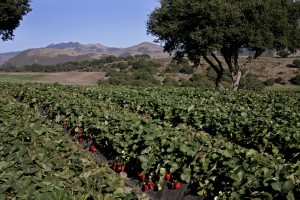Whose Fault is Fat?
- At December 10, 2010
- By Katherine
- In Articles
 0
0
 Original Content, The Washington Post
Original Content, The Washington Post
Trying to lose weight and stay fit seems daunting at times. The proof of our universal difficulties is evident when you consider that most of us — two-thirds of the U.S. population — tip the scales with numbers higher than medical authorities say is healthful.
When my clients occasionally express hardships, I remind them that in our personal struggles to be slender and healthy, we face two fierce, unforgiving forces: our genetics and our environment. The origin of the frustrations we’re facing today can be traced back 100,000 or more years. By then, our genetic code reflected millions of years of evolution, and it hasn’t changed much since. But our environment has changed dramatically in the last several generations — too quickly for our genetics to adjust.
Our genetics guide us toward certain behaviors that we once needed to survive, according to S. Boyd Eaton, professor of radiology and anthropology at Emory University in Atlanta. But in the relative affluence of modern life, these behaviors now may cause us grief — and girth. “There is a dissonance between ‘stone age’ genes and ‘space age’ circumstances,” says Eaton.
So does the mismatch mean it’s impossible to be slim and fit?
We evolved in an environment where food was scarce; we faced regular famines and our food was obtained with great physical exertion through hunting and gathering. To overcome these obstacles, we developed certain characteristics that enabled us to survive.
For one, we feasted when food was available. Those who demurred when there was food around with, “No thanks, I’m not hungry,” probably didn’t survive.
We also became very efficient at storing body fat, according to Eaton, a trait that kept us alive through lean times. And the most concentrated sources of calories — sugar and fat — were most appealing to us. For millions of years, we survived mainly on fruit, according to Eaton, and that created a natural attraction to sweetness; fat tasted good to us because when food was scarce it was an efficient way of getting calories.
On top of that, our ancestors, in their struggle to survive, burned 3,000 to 3,500 calories a day (compared to the average adult rate today of 2,000).
So take these genetic predispositions that have been in place for millions of years and put them into modern life, particularly into the last half century, during which we have created an environment and culture of abundance without precedent. The U.S. agricultural system produces 3,800 calories per person per day, double what most people need — and we barely have to lift a finger to get any of it. Moreover, the marketing, availability, flavor and abundance of that food — much of it high-calorie, low-nutrient processed foods (which earn the most profit) — make healthful eating a challenge for everyone.
“Because of the deadly combination of the availability of fattening foods and our natural desire to eat it, we live in a toxic environment which is a perfect recipe for creating obesity,” says Kelly Brownell, Director of the Yale Center for Eating and Weight Disorders. “If you were starting a society from scratch to maximize the likelihood of people being overweight, it’s hard to imagine doing it much better.”
Brownell, the author of “Food Fight” (McGraw Hill, 2004) lists factors in the environment that make unhealthful eating more likely. Among them:
• Accessibility Studies show we’re more likely to eat whatever is in our environment. And our environment is chock-full of unhealthy, high-calorie foods. Vending machines and drive-in restaurants are open 24/7, fast foods and snack food are abundant in schools, and even places like gas stations and drugstores have become opportunities to buy food.
• Convenience For people in a hurry (and who isn’t today?), unhealthful foods are easier to acquire, whether from drive-in windows or local convenience stores on every corner.
• Taste It’s easy and cheap to make foods tasty by adding fat, sugar or salt. And most people prefer Haagen-Dazs to Brussels sprouts and Big Macs to broccoli.
“Human beings becoming increasingly obese in a world awash in tasty calories and convenience devices is as easy to understand as polar bears, with their thick white coats, overheating under the Sahara sun,” said David Katz, director of the prevention research center, Yale School of Medicine, at the Time/ABC News Summit on Obesity in May. “While it’s true that we have no native defenses against caloric excess or the lure of the couch, we do have one great asset to fix our weight problem: we’re smarter than the average bear.”
Katz, author of “The Way to Eat” (Sourcebooks, 2002), believes in “skill” power rather than will power. “Overcoming an obstacle begins with identifying it. Then we can apply skills and strategies to all of the obstacles we encounter in our efforts to be thin and healthy,” said Katz. We may not be able to change our genes, but we can change our personal environments. And research confirms the most successful long-term weight losers work at avoiding temptations.
Most of your craving and uncontrolled overeating will be conquered when you feed your body the healthful food it needs regularly during the day and you have the food at your fingertips when you need it.
“With the right dose of skill power, rather than will power, we can navigate safely around the nutritional hazards of the modern landscape,” said Katz.
© 2004 The Washington Post Company
For more fabulous tips and simple, effective ways to lose weight,
buy her book, Diet Simple!









